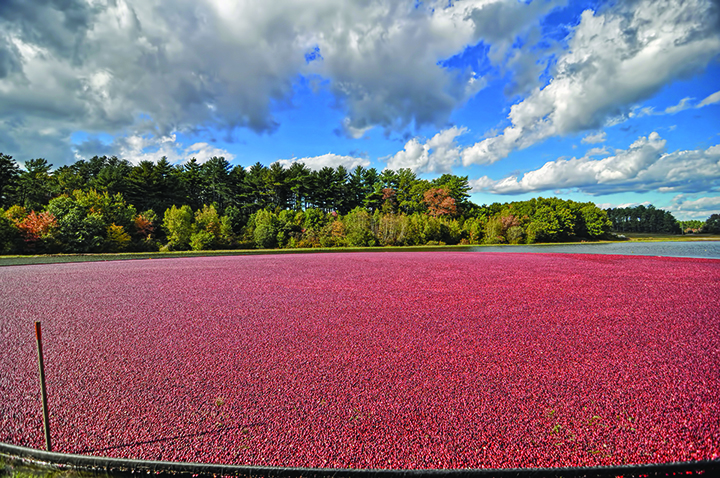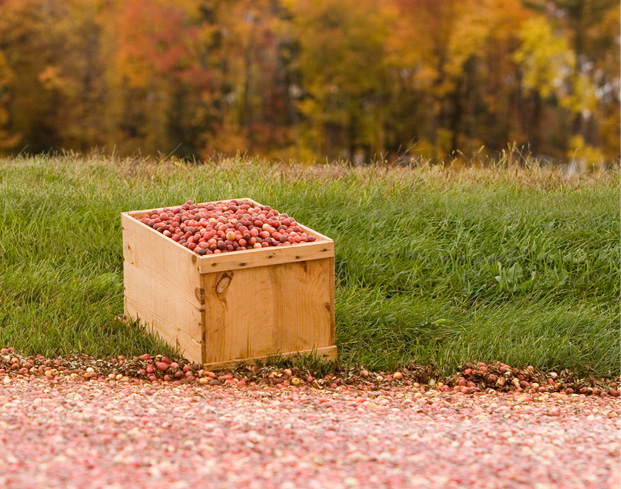Growing & Harvest
Cranberries grow on low-lying vines in impermeable beds layered with sand, peat, gravel and clay. These beds are known as “bogs” or “marshes” and were originally created by glacial deposits. Commercial bogs use a system of wetlands, uplands, ditches, flumes, ponds and other water bodies that provide a natural habitat for a variety of plant and animal life. Cranberries are harvested in the fall, generally from mid-September through mid-November.
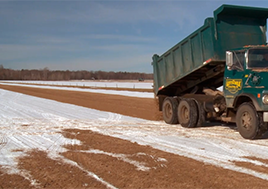
Winter
Bogs and marshes are flooded to create a layer of ice that protects vines from harsh weather. The ice also allows for sanding of the beds, which stimulates growth when the ice melts.
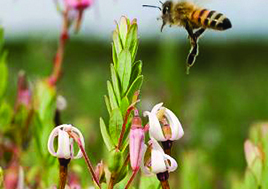
Spring
Bogs and marshes are drained and blossoms appear for bees to pollinate. Growers monitor for frost and insects.
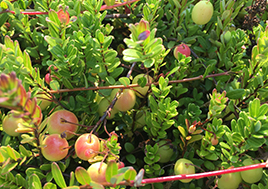
Summer
Petals fall from the flowers, leaving small green nodes that will turn into cranberries. Growers irrigate as necessary and monitor fruit quality.
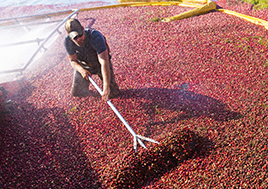
Fall
Berries achieve size and color and are harvested using wet or dry methods. Beds begin to go dormant after harvest and growers begin off-season maintenance work.
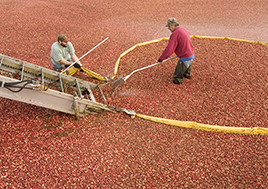
Wet Harvest
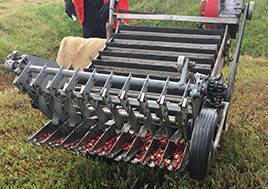
Dry Harvest
Wisconsin grows 61% of the cranberries in the US while Massachusetts accounts for another 26%.
Cranberry Bogs & Marshes
Vaccinium Macrocarpon
There are more than 100 varieties of cranberries that grow in North America.
Popular Cranberry Varieties
Ben Lear
Discovered by D. R. Burr in 1900 in Berlin, Wisconsin, this variety represents 11% of Wisconsin acreage. The Ben Lear variety develops color in early-mid September.
Howes
Discovered by E. Howes in 1843 in East Dennis, Massachusetts, Howes are harvested about three weeks after the Early Blacks. Howes produce bigger, firmer, tart berries and they store well. Howes can be sliced and still hold their berry shape. This variety represents 36% of acreage in Massachusetts.
Searles
Discovered by A. Searles in 1893 in Wisconsin Rapids, Wisconsin, this variety represents 17% of acreage in Wisconsin.
Early Blacks
Discovered by N. Robbins in 1852 in Harwich, Massachusetts, they are the first berries to market in September. Growers like them because they can be harvested before the fall frost season. The berries are smaller and yield less than new hybrids but have a sweeter taste and intense red color. This variety represents 43% of acreage in Massachusetts and 55% in Oregon, New Jersey, and Washington.
McFarlin
Discovered by T. H. McFarlin in 1874 in S. Carver, Massachusetts, this variety represents 11% of Wisconsin acreage and 54% of Washington acreage.
Stevens
Discovered by H. F. Bain in 1940 in Whitesbog, New Jersey, this variety dominates in the largest growing region of the country, accounting for 51% of the acreage. Stevens also accounts for 12% of acreage in Massachusetts and 75% of acreage in Oregon.

